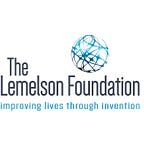Inventing for a Better Future
These innovators are changing the face of invention — and working to change the world.
A hundred years ago this year, Jerry Lemelson was born into a world that was being transformed by the power of invention. He himself became a prolific and versatile inventor, with more than 600 patents across a wide range of industries.
He and his wife Dolly created The Lemelson Foundation to build supportive, equitable environments for a new generation of diverse inventors and entrepreneurs as they design and develop solutions for a better future.
This year, as a lead-up to National Inventors’ Day, we’re spotlighting inventors who are striving to make a positive impact around the globe. Their inventions offer solutions to some key issues in the 21st century, including health care access, climate change, and sustainability.
From students to accomplished academics and entrepreneurs, these innovators represent a range of ages, backgrounds, and geographies. But one desire is at the heart of each of their stories — a commitment to addressing the most important local and global challenges of our time through invention.
John Warner is a trailblazing chemist who started life as a musician. He went on to co-found the field of green chemistry and became a prolific inventor with more than 300 patents to his name for inventions ranging from non-toxic hair dye to rejuvenating asphalt to drugs to treat a variety of diseases. He co-founded with his wife Amy Cannon the nonprofit organization Beyond Benign to promote green chemistry in K-12 classrooms and to help ensure that green chemistry principles are being integrated into higher education curricula, all to transform the way the next generation of chemists are taught and trained.
Indian entrepreneur Geetha Manjunath left her career in IT to focus on breast cancer detection after losing two family members to the disease. She founded Bangalore-based company Niramai and developed the Smile 100, a low-cost tool that uses thermal imaging to help doctors screen for cancer. Niramai is now operational in nearly 30 hospitals throughout India and has screened some 60,000 women. Despite the challenges of becoming an entrepreneur, Manjunath maintains her passion for helping people in need and encourages aspiring women inventors to stay dedicated to the problems that they want to solve.
Invention was the key to unlocking Thien Nguyen’s educational and career paths after he immigrated to the U.S. from Vietnam as an elementary school student. Although he didn’t speak English at the time, he learned that he was gifted in math after joining an invention education program called Oregon MESA (Mathematics, Engineering, and Science Achievement). This propelled him into studying computer science at Northeastern University and becoming a software engineer at Spotify.
For her high school science fair project, Dasia Taylor combined her childhood interest in medicine with her passion for racial equity. She invented low-cost, color-changing sutures that detect infections based on a wound’s pH levels, winning state and national competitions and widespread industry and media recognition. Now a college student, she is working to patent her invention and founded her own company, Variegate.
Maria Artunduaga was on track to become a pediatric plastic surgeon when she lost her grandmother to chronic obstructive pulmonary disease (COPD), the third-leading cause of death in the U.S. and a condition that largely goes undiagnosed. Artunduaga decided to transform her career, enrolling in engineering school and inventing an easy-to-use, inexpensive device that uses sound to detect respiratory issues. Although she faced challenges leaving clinical medicine and founding a startup, Artunduaga is now fulfilling her goals of helping people and serving as a role model for other young women.
A biomedical engineer who graduated from Stanford in 2006, Ratul Narain relocated to India and began testing his monitoring device for newborns — a silicone bracelet called the TempWatch that alerts parents when a baby becomes too cold. The device quickly received funding, and Narain founded Bempu Health in 2014 to continue to address India’s gaps in access to neonatal care. The TempWatch later appeared in Time Magazine as one of the world’s top 25 inventions of 2017 and, along with Narain’s other inventions, has helped nearly 35,000 babies around the world.
A severe concussion inspired former rugby player and inventor Jessie Garcia to create an affordable device that detects possible concussions. Between self-funding and finding physical space for product development and creation, her entrepreneurial efforts resulted in the invention of the Tozuda Head Impact Indicator — a small sensor that attaches to the back of any helmet. Launched in 2019, Garcia’s device is now used by athletes and industrial workers alike.
